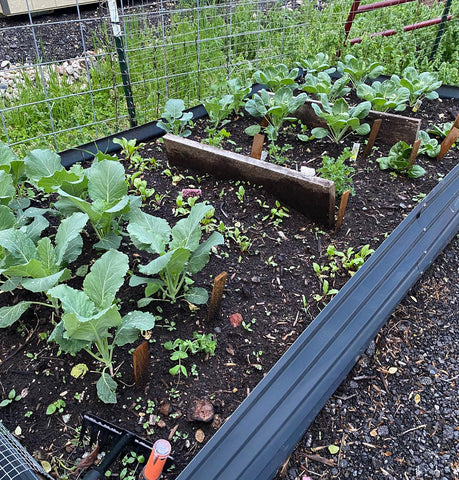In a world where water scarcity and environmental sustainability are becoming increasingly pressing issues, innovative solutions that promote efficient water use and conservation are more crucial than ever. One such solution that aligns perfectly with these goals is rainwater harvesting. This practice involves capturing and storing rainwater for various uses, including watering plants and gardens. In this comprehensive guide, we'll delve into the concept of rainwater harvesting in gardening, exploring its benefits, methods, and how it embodies sustainability in action. The following content also has some reference value for raised garden beds.
Understanding Rainwater Harvesting
Rainwater harvesting is the practice of collecting and storing rainwater for future use. While this method has been employed for centuries, its importance has grown significantly as water resources become scarcer due to factors like climate change and population growth. Rainwater is collected from roofs, gutters, and downspouts and then directed into storage containers such as barrels or tanks. This collected rainwater can then be used for various non-potable purposes, including irrigating gardens, lawns, and landscapes.

The Benefits of Rainwater Harvesting in Gardening
- Water Conservation: One of the most significant benefits of rainwater harvesting is its potential to significantly reduce the demand for potable water. By using collected rainwater for garden irrigation, you can help conserve precious municipal water resources.
- Reduced Water Bills: As you rely less on the municipal water supply for irrigation, your water bills can decrease, leading to potential cost savings over time.
- Enhanced Plant Health: Rainwater is naturally soft and free of the salts, minerals, and chemicals often found in tap water. This makes it an ideal choice for plant irrigation, promoting healthier growth and stronger root systems.
- Soil Enrichment: Rainwater is rich in nitrogen, an essential nutrient for plants. When you use rainwater to water your garden, you're enriching the soil with this natural fertilizer.
- Eco-Friendly Choice: By reducing your reliance on treated water from public utilities, you're indirectly decreasing energy consumption and the carbon footprint associated with water treatment and distribution.
- Stormwater Management: Rainwater harvesting helps manage stormwater runoff, which can contribute to soil erosion, flooding, and pollution in local water bodies.
Methods of Rainwater Harvesting
- Basic Rain Barrels: Rain barrels are a simple and cost-effective way to start rainwater harvesting. They collect water from downspouts and store it for future use in the garden.
- Above-Ground Tanks: These tanks can hold larger volumes of rainwater and are ideal for more extensive gardening projects. They can be positioned above the ground for gravity-fed irrigation systems.
- Underground Cisterns: These larger storage options are placed underground and can store significant amounts of rainwater. They are particularly useful for larger properties or areas with limited above-ground space.
- Green Roofs: Implementing a green roof involves designing your roof to be a garden itself, capable of absorbing and utilizing rainwater directly.
- Rain Gardens: Rain gardens are strategically designed landscaping features that capture and manage rainwater, allowing it to be naturally absorbed into the ground.
Steps to Successful Rainwater Harvesting
- Evaluate Your Property: Determine the most suitable areas for rainwater collection based on the layout of your property, the direction of water flow, and accessibility.
- Choose the Right Storage System: Decide on the type of rainwater storage system that best meets your needs and the size of your gardening area.
- Install Gutters and Downspouts: Ensure your roof has gutters and downspouts to direct rainwater into your chosen collection system.
- Screen and Filter: Use screens and filters to prevent debris and contaminants from entering the storage system.
- First Flush Diverter: Install a first flush diverter to redirect the initial flow of rainwater, which may contain pollutants from your roof, away from your storage system.
- Maintenance: Regularly clean and maintain your rainwater storage system to prevent the buildup of debris and ensure the quality of collected water.
- Efficient Distribution: Set up a system to efficiently distribute collected rainwater to your garden. This can involve gravity-fed hoses, drip irrigation, or soaker hoses.
Conclusion
Rainwater harvesting in gardening is a shining example of sustainability in action. By capturing and utilizing a natural resource that would otherwise go to waste, you're taking a proactive step towards water conservation, reducing your environmental impact, and promoting a greener future. Whether you start with a basic rain barrel or invest in more advanced storage systems, every drop of rainwater you collect contributes to a more sustainable and resilient landscape. As you witness the growth and vibrancy of your garden nurtured by collected rainwater, you'll not only experience the tangible benefits but also the profound satisfaction of making a positive change for both your immediate surroundings and the planet at large.










